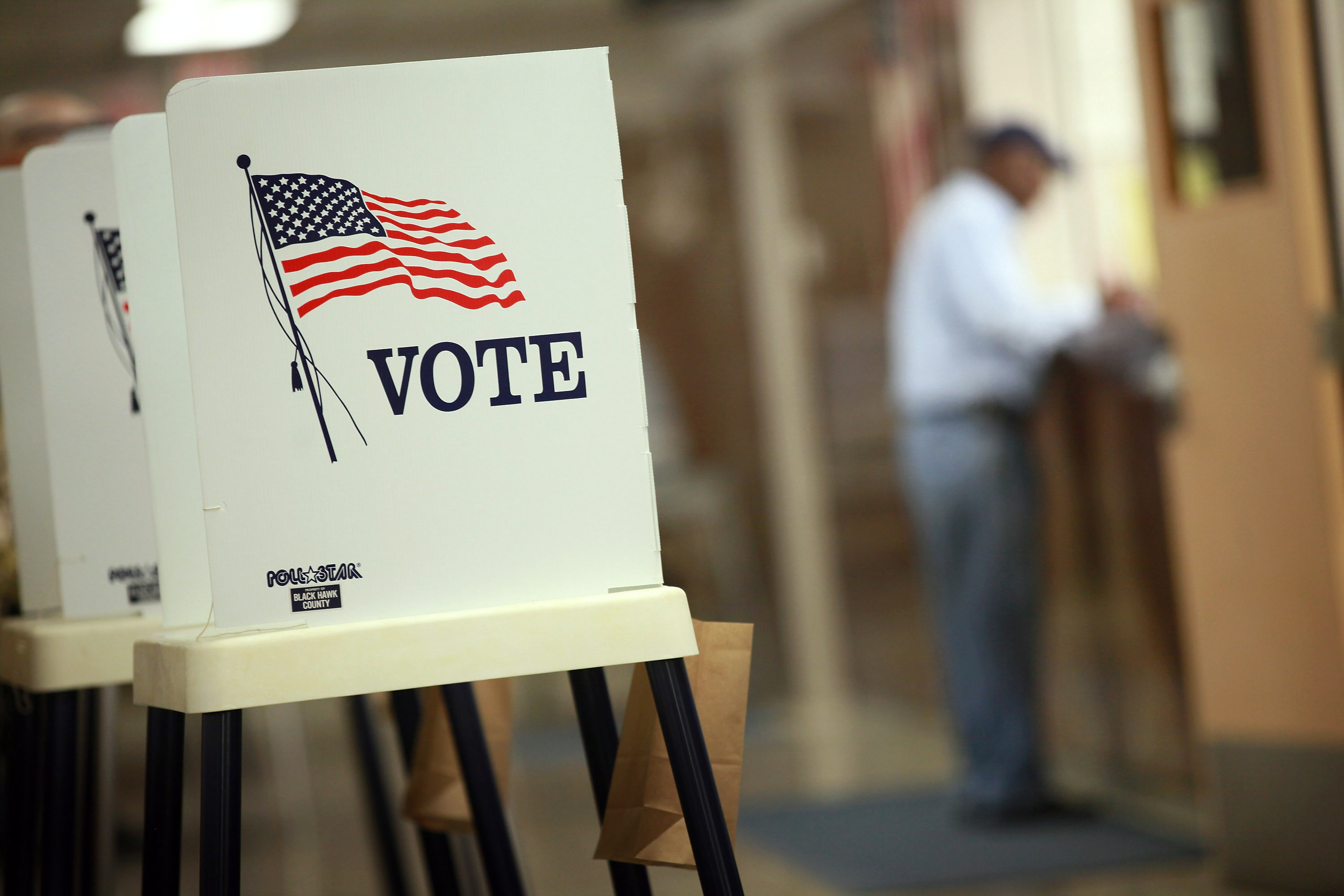It has been just over three months since the presidential election. But Donald Trump is openly running for re-election in 2020, and many people are throwing their hats in the ring for the congressional election in 2018. We are in the era of constant campaigning. Or else, we wouldn’t have a job, here, ya know.
But why wait for 2018? There are elections THIS year—starting just two months from now.
Election junkies need not wait until November 2018 to get their next fix. They don’t even need to wait for the gubernatorial elections in New Jersey and Virginia later this year. Five special elections for the House of Representatives are expected to take place over the next few months: California’s 34th congressional district, Georgia 6, Kansas 4, Montana At-large and South Carolina 5. . .
The relationship between the previous presidential vote in the district and how well the president’s party’s House candidate did in the special election did seem to depend, however, on the president’s popularity at the moment the election was held. When Obama was more popular, Democratic House candidates did a bit better; when he was less popular, they did worse. . .
The good news for Republicans is that most of the districts with upcoming elections weren’t at all competitive in 2016. . .
Georgia 6
• Election date: April 18 primary, June 20 general election
• 2016 presidential margin: Trump 48 percent, Clinton 47 percent
• 2016 House margin: Tom Price (Republican) 62 percent, Rodney Stooksbury (Democrat) 38 percentIf there is one special election to watch, it’s this one in the Atlanta suburbs. Republican Tom Price (now Trump’s secretary of health and human services) easily won this district in 2016. But Trump barely carried it in the 2016 general election and lost it in the Georgia GOP primary to Marco Rubio (despite carrying the state going away). Trump struggled largely because the district is highly educated — 60 percent of people 25 or older in the district have a college degree, compared with just 31 percent nationally. Mitt Romney won this district by over 20 percentage points in 2012, but Trump underperformed across the country with college-educated voters compared to previous Republican nominees. . .
Montana At-Large
• Election date: TBD
• 2016 presidential margin: Trump 56, Clinton 35
• 2016 House margin: Ryan Zinke (Republican) 56 percent, Denise Juneau (Democrat) 41 percentRep. Zinke, who currently holds Montana’s one House seat, is likely to be confirmed as secretary of the interior. But he hasn’t yet, so no date has been set for the vote to replace him. . .
Democrats have won a number of statewide races in Montana recently, including the governorship last year. They have a chance of winning this seat. But [Republican high-tech entrepreneur Greg] Gianforte would be a strong favorite. Montana is really red, after all. . .
Kansas 4
• Election date: April 11
• 2016 presidential margin: Trump 60, Clinton 33
• 2016 House margin: Mike Pompeo (Republican) 61 percent, Daniel Giroux (Democrat) 30 percentThe suspense in this Republican-leaning district evaporated the minute Republicans selected State Treasurer Ron Estes as their candidate to replace Mike Pompeo, recently sworn in as Trump’s CIA director. . . Democrats can probably consider it a victory of sorts if [attorney James ] Thompson loses by less than 20 percentage points. . .
South Carolina 5
• Election date: May 2 party primaries, May 2 party runoffs, June 20 general election
• 2016 presidential margin: Trump 57, Clinton 39
• 2016 House margin: Mick Mulvaney (Republican) 59 percent, Fran Person (Democrat) 39 percentMulvaney was just confirmed to be Trump’s Office of Management and Budget director, so some unexpected candidates may decide to run at the last minute. Still, any chance Democrats had of winning this race probably ended when state Sen. Vincent Sheheen decided not to run. . .
California 34
• Election date: April 4 primary, June 6 general election
• 2016 presidential margin: Clinton 84 percent, Trump 11 percent
• 2016 House margin: Xavier Becerra (Democrat) 100 percent, Republican 0 percentThe only real question in this heavily Latino district covering Los Angeles is which Democrat will succeed Becerra, now California’s attorney general. Twenty-three candidates have filed to run.
As noted in the article, three of the four elections should be landslide Republican wins. But California has an odd system, whereby the two top vote getters in the primary go on to the general election. In most of California, that usually means there are no Republicans on the ballot for the major posts.
However, the National Review says you shouldn’t take that for granted.
They also tend to attract unusually lower voter interest and turnout, providing opportunities for the two parties to win seats they ordinarily would have no shot at winning. Two good recent examples are Republican Charles Djou’s 2010 win in Hawaii’s First District, which the Cook Partisan Voting Index rates as 18 points bluer than the average district, and Republican Robert Turner’s 2011 victory in Anthony Weiner’s old New York City district, which is 31 points bluer according to the CPVI. Djou subsequently lost his bid for a full term, and Turner decided to run for another office instead, meaning that their special elections essentially allowed the GOP to borrow two otherwise-unwinnable seats for a year or so. . .
On paper, none of these contests seem particularly competitive, but given the unpredictability inherent to low-turnout contests, it would be a mistake to assume that their outcomes will preserve the status quo.
There will be other elections later in the year, but we wanted to give you a “fix,” in case you were having political withdrawal symptoms.
Donate Now to Support Election Central
- Help defend independent journalism
- Directly support this website and our efforts
